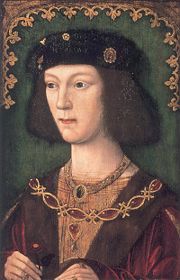
http://primary.naace.co.uk/activities/unton/sickness/info/medicine.htm
Tudor medicine was not very scientific. Doctors had to train in astrology as well as medicine as people still believed then that some illnesses were caused more by the influence of the stars than by germs and poor hygiene. The word influenza comes from "influence" and malaria means "bad air". People did not understand about germs. During their training few doctors had the chance to study anatomy except from books.
Most people had no access to doctors, as they were very expensive. The best that poor people could hope for was to be treated by a herbalist or a wise woman. This was often better! There were no anaesthetics, antibiotics or painkillers. If anyone needed to have an operation they would probably die from infection. Barbers were also trained as surgeons.
One of the common treatments was bleeding. Sometimes a doctor would open a vein by cutting it to let out "bad blood". Sometimes they would put leeches on the skin. Leeches are blood-sucking creatures that attach themselves to the skin. When they have gorged themselves with blood they drop off.
During the period of the Black Death and the Great Plague of London, plague doctors visited victims of the plague to verify whether they have been afflicted or not. They were mostly unqualified. Most qualified doctors had left the city to avoid being afflicted. Their outfit consisted of a hat to show that the man was a doctor, mask to protect the face, crystal "eyes" to "protect" the eyes, the beak stuffed with spices or herbs to "purify" the air that the doctor breathed, wooden stick to push away victims who would get too close to him, leather gloves to protect the hands, gown waxed from the exterior, and full length boots. It was believed at the time that the plague was spread through the air, not through the fleas living on the black rats. Therefore, they stuffed herbs and spices in their "beaks" or carried them somewhere. The waxed clothing may have helped prevent fleas latching on, and the clothing also prevented getting infection.


No comments:
Post a Comment